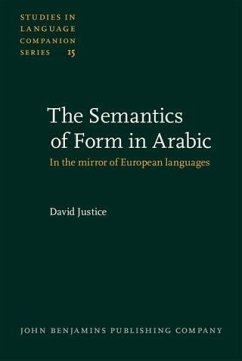Justice's first aim in this volume is to demystify the Arabic language, which is widely perceived as difficult to learn, and has been characterised as ambiguous and confusingly polysemous. The central concern of this three-dimensional portrait of Classical Arabic is a version of the Sapir-Whorf hypothesis that language is a determinant of other aspects of culture. But rather than focusing on the possible influences of language on thought, Justice is intersted in connections between language and language use or langue and parole. Among the topics treated are: the difficulty of Arabic; morphosyntax and Whorfian semantics; the role of duality in Arabic; iconicity; a population profile of vocabulary; the syntactic cut' of Arabic; and the relation between causatives and verbs that ascribe qualities to an object. This erudite and thought-provoking volume will be of interest not only to Arabists but to linguistic anthropologists in general.
Dieser Download kann aus rechtlichen Gründen nur mit Rechnungsadresse in A, B, BG, CY, CZ, D, DK, EW, E, FIN, F, GR, HR, H, IRL, I, LT, L, LR, M, NL, PL, P, R, S, SLO, SK ausgeliefert werden.

